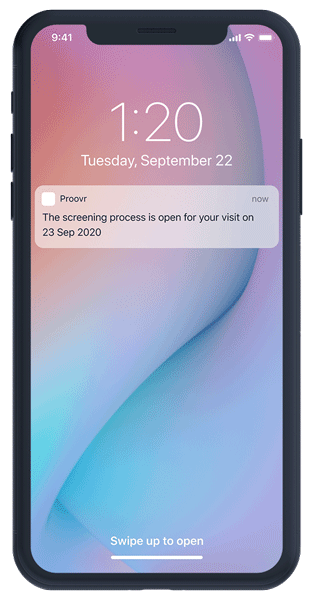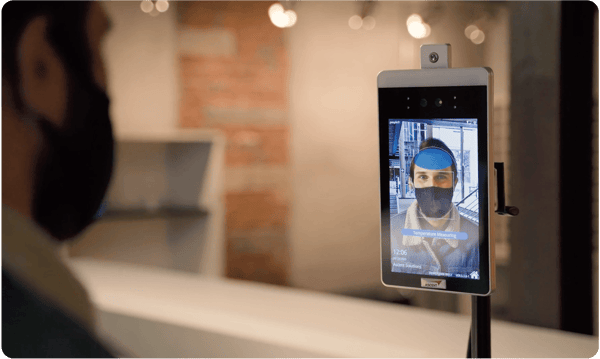After these past months of widespread commercial stress, globally depleting profit-margins, and the ongoing ramifications of prolonged social isolation in populations, it’s not hard to see why any organization would be eager to get out of seclusion and back to work.
When it comes to investment enterprises, insurance companies, real estate firms, and other institutions of the financial sector, those desires tend to multiply considering the especially large impact that interpersonal business relationships and face-to-face customer interactions hold.
In fact, 76% of surveyed wealth management professionals expressed that, as a whole, in-person meetings foster more client engagement.
Despite these benefits, many industries have dealt with rising cases of COVID-19 in the workplace this year, rightfully raising concerns among employees about a return to work. The financial sector has certainly not been spared, as employees at companies like Goldman Sachs and JP Morgan have raised alarms about the spread of the virus in their offices.
But thankfully, interconnected workplace technologies are helping us devise safer ways of returning to the workplace and minimizing risks. Let's take a deeper look.
The pressing need for people flow management
The phrase ‘people flow management’ refers not just to the management of a building’s employees but of every individual that steps onto a property—including contractors and visitors.
Without the ability to monitor people flows within buildings, and to securely store their sensitive data for as long as needed for contact tracing purposes, workplaces will remain open to vulnerabilities. (See our article on how people flow management ensures workplace safety under OSHA).
For instance, unless all employees and visitors are properly screened, symptomatic individuals could enter a business’ premises. If processes aren’t carefully scheduled with social distancing in mind, the risk of unwanted person-to-person contact increases exponentially.
Thankfully, to address this critical need for safety measures and better help the ample industry leaders seeking to return staff to their offices during these hazardous times, people flow management systems have risen to the occasion.
7 key advantages of a people flow management system
Ensuring the safety of all people in the office depends partly on how seamless and secure their initial back-to-work transition plays out.
This process begins the moment employees are first notified that their work attendance is requested once more, long before they ever actually return to their desks. From that moment forward, how well-informed employees are on the nature of their upcoming return, and the safety measures in place for them, becomes critical.
People flow management systems address this issue, and other key facets in fostering a positive people flow experience in buildings during the current pandemic and beyond. They achieve all this by offering a comprehensive suite of monitoring and managing tools that are personalized to the unique needs of each organization they cater to, with primary features such as:
1. Pre-visit remote registrations and health screenings
Remote registration tools allow financial organizations to screen employees, visitors, and contractors for safe access to their properties via health questionnaires and alerts that restrict entry to anyone who flags as a potential risk before they ever leave for the office.

2. Secure data stored for only as long as necessary
Organizations come across countless pieces of employee and customer information every day. And during the pandemic era, much of that data is sensitive. Cloud-based people flow management not only automatically gather and organize this data into an applicable context, but also securely store it for only as long as necessary, in compliance with data privacy regulations.

3. A touchless check-in process
Unique QR codes that can be scanned at kiosks and access control points create contactless employee and visitor check-in experiences. As part of this touchless check-in process, integrated contactless temperature scanners check temperatures upon their arrival, and deny them access to the building if they have a fever.

QR codes also provide the added security benefit of guaranteeing exclusive access for people meant to be on the premises alone.
4. Meeting building occupancy limits
People flow management systems apply the valuable data they collect to help companies analyze and highlight optimal employee workflows, ensuring building occupation levels meet guidelines at any given time while offering visitor appointment times that bear contact safety in mind.

5. People flow monitoring and interaction tracking
If the unfortunate case where an employee is exposed arises, the ability to accurately track who they may have been in contact with in recent days becomes essential for contact tracing.
Just imagine what would happen if an employee visited an office in recent days and then learned their spouse tested positive for COVID-19. It would be imperative that everyone who interacted with that employee at the office - whether they be a fellow co-worker, a contractor who was visiting for the day, or anyone else - be contacted to minimize the chance of further exposure.
This is why tracking the actual presence of employees in the building for contact tracing purposes - as opposed to just those who have booked desks and don’t end up coming in, particularly missing out on tracking those who show up unannounced - is absolutely critical.

6. The adaptability to meet changing regulations on the fly
Global, regional, and local health regulations for properties that have emerged during COVID-19, and continued privacy regulations for data policies such as GDPR and HIPAA, can change often. Because businesses within the financial sector need to stay current to avoid costly violations, people flow management systems are highly flexible to adhere to all forms of external and internal guidelines without delay.

7. Instant emergency alerts
The ability to include employees and visitors on emergency lists, and send emergency alert messages to all people on the premises, allows organizations to immediately share on-site emergency instructions.

How Proxyclick can help financial organizations with a safe return
We've developed a series of features to help companies keep their people safe. Designed based on real market needs and already being used by leading businesses in the financial sector.
Safely welcome back your employees with our latest features.
